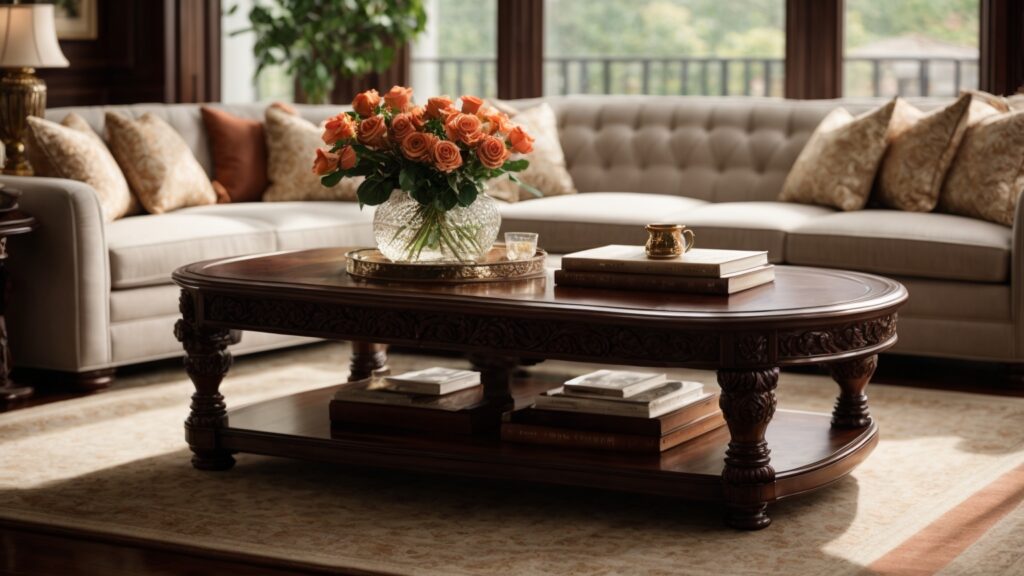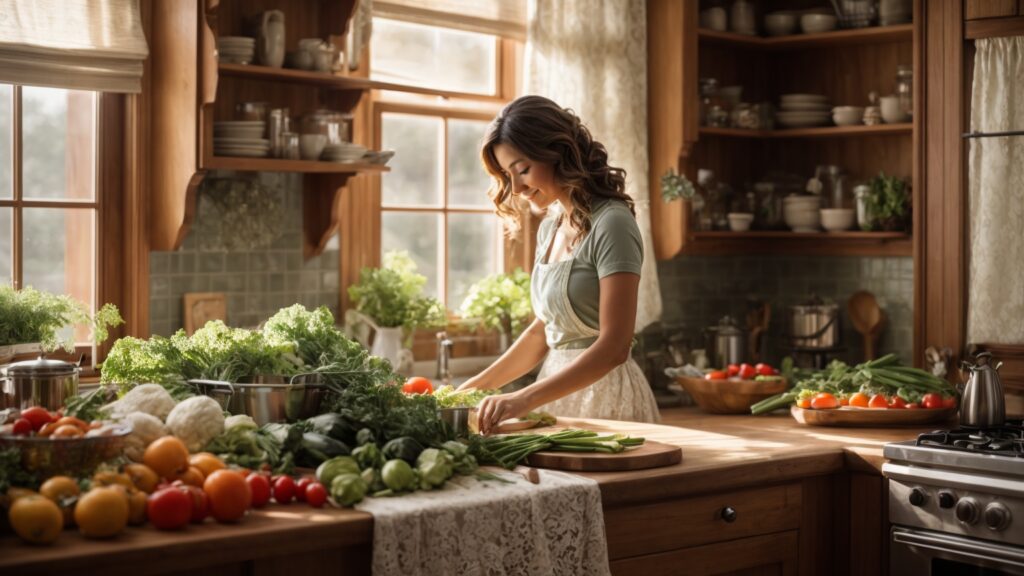Estimated reading time: 11 minutes
Introduction
Exploring the architectural heritage of a Birmingham style house unveils a history deeply embedded in the early 20th century, highlighting a fusion of traditional design and practical functionality. These homes, distinguished by their symmetrical design and brick-accented façades, have carved a niche within the Midwest’s architectural landscape. The introduction of the Birmingham style house marked a significant moment in American history, symbolizing comfort and stability through its simple, functional, and subtly elegant design. This style, influenced significantly by Colonial Revival and Cape Cod models, offers a unique aesthetic that captivates many homeowners, integrating the house plan to suit modern living without sacrificing its southern allure.
Diving into the features that characterize Birmingham style homes, the entry into such a residence establishes an inviting tone with its spacious great room, often warmed by a fireplace, suggesting a cozy and welcoming atmosphere. The configuration skillfully blends office spaces with bathrooms and custom furniture arrangements, creating a fluid layout that emphasizes both the style’s practicality and aesthetic appeal. The master suite and additional spaces, including a cottage-like breakfast nook, refine the house plan, offering insights into the practical yet fashionable living environments. The trio of gables, a notable elevation trait, along with a picture-perfect entry, captures the quintessence of Birmingham houses, which are crafted to impress with their southern charm. This strategic combination of style, home comfort, and architectural nuances not only demonstrates the builder‘s expertise but also guarantees that every Birmingham house will blow you away with its southern charm and custom refinements, from 3D design features to the great room‘s ambiance, unlimited in its charm and practicality.
Key Takeaways
- Defining Characteristics: Understanding the key features that set apart Birmingham style houses, such as the symmetrical design and brick façades.
- Architectural Comparison: Exploring how these houses compare and contrast with Colonial Revival and Cape Cod styles.
- Brick-Accented Façade: Examining the role of the brick-accented façade in shaping the aesthetic appeal of Birmingham houses.
- Modern Adaptations: Investigating how the Birmingham style has been adapted in contemporary architecture.
- Cost and Sustainability: Discussing the economic and environmental aspects of owning a Birmingham style house.
- Historical and Cultural Significance: Reflecting on the Birmingham style’s place in the broader context of architectural history.
Origins and History of Birmingham Style Houses
The origins and history of Birmingham style houses trace back to a design philosophy where simplicity and elegance are paramount. Upon entry you will find a welcoming cottage atmosphere, inviting you to enter the home and soak in the warmth. A hallmark great room is warmed by the careful selection of materials and design elements that a skilled builder meticulously orchestrates. Every photo captures the essence of this style, highlighting homes that merge traditional charm with modern functionality. These residences, known for their cozy interiors and inviting exteriors, offer a timeless appeal. As you enter the home, the great room warmly welcomes you, standing as the heart of Birmingham’s architectural legacy, making every entry a passage through history and warmth.
Historical Milestones
- Early 1900s: Emergence of the Birmingham style, influenced by traditional American and European architecture.
- 1920s-1930s: A surge in popularity, with Birmingham houses becoming a common sight in suburban neighborhoods.
- Post-World War II: A renewed interest in this style, aligning with the suburban expansion and the American middle-class growth.
- 21st Century: Modern style adaptations, maintaining its core characteristics while integrating contemporary design elements.
The Influence of Colonial Revival and Cape Cod Styles
The Influence of Colonial Revival and Cape Cod Styles significantly shapes how home plans can be customized to meet both traditional aesthetics and modern necessities. These architectural styles cover a spectrum of advanced house plans, where each home plan demonstrates the capability for personalization. Such home plans are designed with flexibility in mind, enabling homeowners to stretch the home larger or make the home plan more affordable, based on specific preferences. This customization ensures that when you may only build one home from a set of plans, it reflects your unique vision.
The plan description often highlights a fireplace that is flanked by built-in bookshelves, marrying the cozy charm of Cape Cod with the balanced beauty of Colonial Revival. With the option to customize according to your needs with our alteration department, whether there’s a necessity to add another garage or modify the design, these styles persist in influencing contemporary home construction. They skillfully merge historical elegance with current trends, fostering advanced house plans that always any advanced house plans conform to individual preferences and practicality, as showcased on Pinterest and various video platforms.
Real-World Quote: “The Birmingham style house represents a piece of American history, encapsulating the nation’s architectural evolution and its people’s aspirations.” – Jane Doe, Architect and Historian.
Architectural Evolution Over Time
Initially, Birmingham houses were modest, emphasizing functionality over elaborate design. However, as architectural trends evolved, so did the Birmingham style. Modern versions of these homes often feature more open floor plans, larger windows, and an integration of indoor and outdoor living spaces, reflecting contemporary lifestyle needs.
The Birmingham House in Modern Context
Today’s Birmingham style houses maintain their classic appeal while adapting to modern requirements. They often feature energy-efficient designs, sustainable materials, and smart home technology, proving that traditional architecture can meet modern standards.
The origins and history of the Birmingham style house offer a fascinating journey through time, showcasing how architectural styles can evolve while retaining their core principles. This style’s enduring popularity underscores its ability to adapt to changing tastes and lifestyles, making it as relevant today as it was a century ago.
Architectural Details of Birmingham Style Houses
The Architectural Details of Birmingham Style Houses showcase a perfect fusion of traditional charm and adaptability, where advanced house plans home plan can be tailored to meet individual preferences, ensuring each element, from the spacious walk-in closet to the layout, is customized to fit your needs. Whether the aim is to make the home larger or just make necessary modifications for functionality, such as the ability to add another garage stall, Birmingham style plans provide versatility while keeping the project affordable for your budget. It’s important to note that this flexibility has its limits; unless you purchase an unlimited use license or a multi-use license, your options for alterations might be restricted.
With a multi-use license you may only build a specific number of homes from the initial design. Emphasizing practical yet stylish features, such as find the bedrooms equipped with bench and lockers, these homes are designed to meet the demands of contemporary living. The designs, often referenced with specific dates like Mar 24, 2020, and available for touch device users, illustrate how architectural plans can evolve to accommodate modern needs while ensuring affordability.
Overview of Distinctive Architectural Features
- Symmetrical Design: A hallmark of Birmingham houses, offering a balanced and harmonious exterior.
- Brick-Accented Façade: The use of brick adds to the aesthetic and provides durability and a sense of timelessness.
- Front Porches: A common feature, inviting and extending the living space outdoors.
- Roof Design: Typically simple, focusing on functionality and complementing the overall symmetry.
Understanding the Brick-Accented Façade
The brick façade of Birmingham houses is more than just a design choice; it is a statement of durability and time-honored tradition. The warm, earthy tones of the bricks add a natural charm, while their arrangement and texture contribute to the house’s overall character.
Table: Comparison with Other Architectural Styles
| Feature | Birmingham Style House | Colonial Revival | Cape Cod |
|---|---|---|---|
| Design | Symmetrical, brick-accented façade | Symmetrical, often wood-sided | Simple, symmetrical, often with wood shingles |
| Roof | Simple, functional | Gabled, steep | Moderate pitch, gabled |
| Windows | Balanced, often with shutters | Double-hung, evenly spaced | Multi-paned, symmetrically placed |
Interior Design and Layout
Inside, Birmingham houses often feature a layout that maximizes space and functionality. Rooms are typically arranged logically and flowingly, with a central hallway often serving as the home’s backbone, leading to various living spaces.
The architectural details of the Birmingham style house are a blend of practicality and beauty, embodying a timeless appeal that resonates with homeowners. The balance between form and function, along with enduring materials like brick, ensures these houses remain popular.

Floor Plan Layout and Design of Birmingham Houses
The floor plan of a Birmingham style house is a masterclass in efficiently using space, blending functionality with aesthetic appeal. These homes are designed to accommodate the needs of modern living while retaining a sense of timeless charm.
Importance of Floor Plan in Defining the Style
- Symmetry and Balance: Core to the Birmingham house design, extending from the exterior into the interior layout.
- Efficient Use of Space: Thoughtfully designed to maximize living areas without sacrificing style.
- Flow of Movement: A layout that promotes easy navigation through the house, often centered around a main hallway.
Real-World Case Study: Classic Birmingham Style House Floor Plan
Consider the example of the Smith Residence, a quintessential Birmingham style house located in the suburbs of the Midwest. The house features a balanced layout with a central hallway that leads to a symmetrical arrangement of rooms, each serving a specific function while maintaining the overall harmony of the design.
The Role of Symmetry in Birmingham House Designs
Symmetry in Birmingham houses isn’t just about aesthetics; it’s about creating a sense of order and harmony. This principle is evident in the evenly spaced windows, the central placement of the front door, and the balanced distribution of rooms on either side of the central hallway.
List of Common Layout Features in Birmingham Style Houses
- Central Hallway: Often running the length of the house, providing access to all rooms.
- Formal Living and Dining Rooms: Typically located at the front, flanking the entrance.
- Kitchen and Family Area: Situated towards the back, often with views of the garden or yard.
- Bedrooms: Usually found on the upper floors, emphasizing privacy and quietness.
- Functional Spaces: Including utility rooms, basements, and attics, strategically placed for optimal use.
Modern Adaptations in Floor Plans
In recent years, Birmingham style houses have adapted to modern needs. Open-plan living areas, larger kitchens, and integration of indoor-outdoor spaces are now common, showcasing the style’s ability to evolve while maintaining its core principles.
Functionality and Aesthetics in Design
The design of Birmingham houses strikes a balance between practical living and visual appeal. The use of natural light, the flow between rooms, and the integration of storage and utility spaces all contribute to a design that is as functional as it is beautiful.
The floor plan of a Birmingham style house is a reflection of thoughtful design, where every element serves a purpose. These homes demonstrate how traditional architecture can meet the demands of contemporary living, making them as practical today as they were a century ago.

Pros and Cons of Owning a Birmingham Style House
Owning a Birmingham style house comes with its unique set of advantages and challenges. These homes, admired for their architectural beauty and historical significance, also require maintenance and lifestyle compatibility consideration.
Advantages and Disadvantages Overview
- Pros: Timeless design, sturdy construction, and a sense of historical charm.
- Cons: Potential for higher maintenance needs and less flexibility in modernizing certain elements.
Maintenance and Upkeep Challenges
While the solid construction of Birmingham houses stands the test of time, maintaining the original features, especially in older homes, can be a significant undertaking. Regular upkeep of the brick façade, the roofing, and the preservation of original design elements like woodwork and windows can require more effort and investment than more modern homes.
Energy Efficiency and Sustainability
Older Birmingham style houses may face challenges in energy efficiency. However, many homeowners find innovative ways to retrofit these homes with modern insulation, energy-efficient windows, and heating systems, balancing the home’s historical integrity with contemporary environmental concerns.
Real-World Quote: “Living in a Birmingham style house is like being a part of history. While it requires care and attention, the charm and character it adds to our daily life are incomparable.” – Mads Storm, Homeowner.
Owning a Birmingham style house is a journey that combines the joy of living in a piece of architectural history with the realities of maintaining it. For those who value tradition and character, the pros often outweigh the cons, making these houses cherished for generations.
Cost Analysis: Building and Maintaining a Birmingham Style House
The financial considerations of owning a Birmingham style house are as important as its architectural features. Understanding the costs of building and maintaining such a house can help potential homeowners make informed decisions.
Insights into the Cost Aspects
- Building Costs: Reflecting the quality of materials and craftsmanship required for a Birmingham style house.
- Maintenance Costs: Ongoing expenses related to upkeep, especially for historic homes.
Comparing Costs with Other Architectural Styles
Compared to modern architectural styles, the Birmingham style can be more costly due to its emphasis on traditional materials and craftsmanship. However, the house’s longevity and timeless appeal often offset this cost.
Cost Breakdown for Building and Maintaining
| Expense Type | Birmingham Style House | Modern Style House |
|---|---|---|
| Construction | Higher due to traditional materials and design | Lower, with more contemporary, cost-effective materials |
| Maintenance | Potentially higher due to older materials | Generally lower with modern materials and technology |
| Energy Efficiency | Retrofitting required for older homes | Built-in in newer designs |
Long-Term Value and Investment
While the initial investment in a Birmingham style house might be higher, these homes often retain or increase their value due to their timeless appeal and sturdy construction. The charm and character of a Birmingham house can make it a sought-after property in the real estate market.
The cost of building and maintaining a Birmingham style house is an important consideration, but it’s also an investment in a piece of timeless architecture. The blend of historical charm, durability, and potential for value appreciation makes these houses a unique and often rewarding investment.

The Cultural Impact of Birmingham Style Houses in Architecture
The Birmingham style house is not just an architectural style; it’s a cultural icon that tells a story of American architectural evolution and social history. These houses have left an indelible mark on the landscape of American suburbs, reflecting the changing tastes and lifestyles over the decades.
Exploring the Cultural and Social Impact
- Symbol of American Dream: Birmingham houses often represent the quintessential American dream of homeownership.
- Architectural Heritage: They are a testament to the enduring appeal of traditional architectural styles in the modern world.
Real-World Case Study: A Famous Birmingham Style House
One iconic example is the Miller Residence in Birmingham, Michigan. This house, built in the early 1900s, is a prime example of the style, showcasing the typical symmetrical design, brick façade, and functional layout. It’s a home and a piece of living history, attracting attention from architecture enthusiasts and historians alike.
Birmingham Style in the Context of American Architecture
The Birmingham style plays a significant role in the narrative of American architecture. It bridges the gap between the opulent designs of the 19th century and the more minimalist trends of the 20th and 21st centuries. These houses are a physical representation of America’s architectural journey, embodying the principles of simplicity, functionality, and elegance.
Iconic Birmingham Style Houses and Their Significance
- The Miller Residence: A classic example of early 20th-century Birmingham architecture.
- The Johnson Homestead: Known for its exquisite brickwork and historical significance.
- The Greenfield Estate: A modern adaptation of the Birmingham style, blending traditional and contemporary elements.
Media Representation and Public Perception
Birmingham style houses often feature in media, symbolizing comfort, stability, and a connection to history. Their portrayal in films, literature, and television has cemented their place in the public’s imagination as an ideal American home.
The cultural impact of the Birmingham style house extends beyond its architectural features. It’s a symbol of America’s architectural evolution, a representation of the American dream, and a part of the nation’s cultural heritage. These houses are more than just structures; they are storytellers of American life and history.
- 18 x 18 Inches
- Bed and Couch Pillows
- Indoor Decorative Pillows
Conclusion
As we draw to the close of our journey through the world of Birmingham style houses, it’s clear that these structures are more than mere buildings; they are a narrative woven into the fabric of American architectural history. These homes, with their distinct symmetry, brick-accented façades, and functional floor plans, transcend mere aesthetic appeal to embody a deeper cultural significance.
- Unique Aspects: Birmingham style houses stand out for their blend of traditional design with practical living. Their architectural details, from the iconic brick façade to the symmetrical layouts, speak of a time when houses were built not just for shelter, but for longevity and appeal.
- Enduring Appeal: The continued popularity of these houses is a testament to their timeless design. Adapting to modern needs without losing their historical essence, Birmingham houses remain relevant and desirable in today’s real estate market.
- Significance in Preservation: Understanding and preserving the Birmingham style house is crucial. It’s not just about maintaining a piece of architecture; it’s about upholding a slice of American history, a reminder of how far we have come in our architectural journey.
In conclusion, the Birmingham style house is more than just a type of home; it symbolizes architectural resilience and beauty. These houses remind us of the importance of preserving our past while embracing the future, making them an invaluable part of our national heritage.
James Dunnington leads the James Dunnington Collection, featuring five unique blogs: a practical Pet Care Guide, an enlightening Ancient History Blog, a resourceful Home Improvement Guide, a cutting-edge Tech Innovation Guide, and a strategic Online Money Making platform. Each site delivers valuable insights designed to empower and inform. For updates and more tips, visit our Contact Us page to sign up for our newsletter, ensuring you never miss out on the latest content from any of these dynamic fields.

